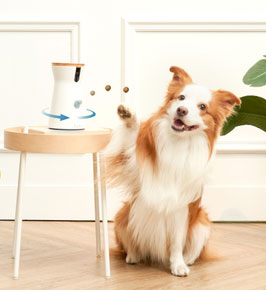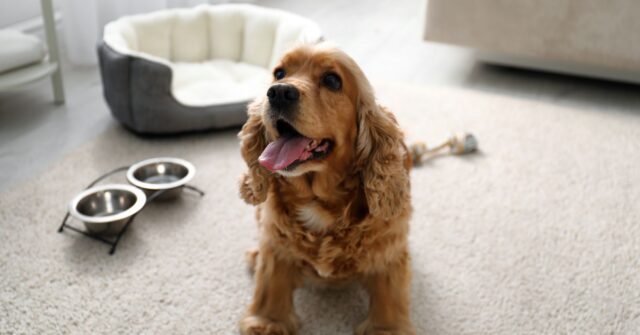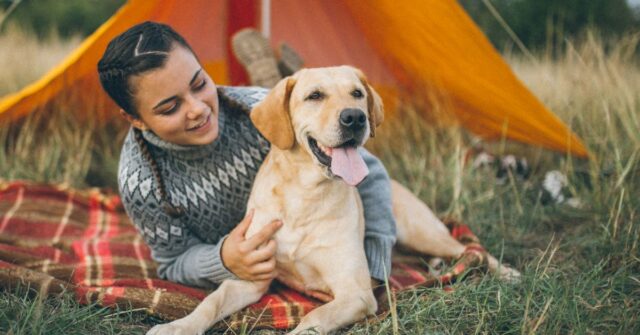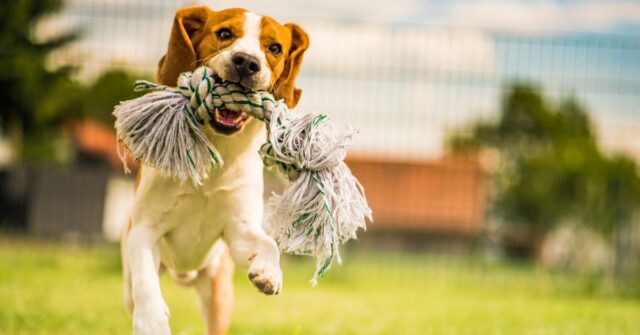Canine sports offer a unique and engaging way for dogs and their owners to bond, stay fit, and enjoy shared activities.
From agility courses to obedience trials, these sports can cater to a wide range of dog breeds and abilities.
In this comprehensive guide, we’ll explore the various types of competitive canine activities, their benefits, and how you can get started with your furry friend.
Introduction
Engaging in canine sports can be a fulfilling and fun experience for both dogs and their owners.
Whether you’re looking for a new hobby or a way to enhance your dog’s physical and mental health, canine sports provide an excellent avenue.
Let’s dive into the world of competitive dog activities available in Australia.
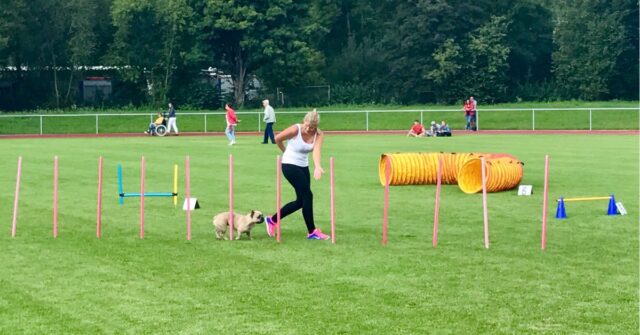

What Are Canine Sports?
Canine sports are structured activities that dogs participate in, often alongside their owners.
These activities can range from agility courses and obedience trials to more specialized sports like herding and sledding.
Each sport tests different skills and abilities, providing both physical and mental challenges for dogs.
Benefits of Engaging in Canine Sports
Participating in canine sports can lead to numerous benefits, including improved physical health, mental stimulation, and stronger bonds between dogs and their owners.
These activities can also help with behaviour management by providing an outlet for excess energy and reinforcing good habits.
Overview of Popular Canine Sports in Australia
Australia boasts a wide variety of canine sports, each with its unique set of challenges and rewards.
Some of the most popular sports include agility, obedience, endurance, flyball, herding trials, sledding, lure coursing, and rally obedience.
Each sport offers something different, catering to various breeds and temperaments.
Agility
Agility is a dynamic sport that involves dogs navigating a course of obstacles, including jumps, tunnels, and weave poles, guided by their owners.
It’s a test of speed, coordination, and the bond between dog and owner.
What is Agility?
Agility requires dogs to complete an obstacle course as quickly and accurately as possible. Handlers direct their dogs through the course, using verbal cues and body language.
This sport is open to all breeds and sizes, making it accessible to a broad audience.
Benefits of Agility Training
Agility training offers numerous benefits, such as improving a dog’s physical fitness, mental acuity, and problem-solving skills.
It also strengthens the bond between dog and owner, as teamwork and communication are crucial for success.
Getting Started with Agility
To get started with agility, find a local club or training centre that offers beginner classes.
You’ll need some basic equipment, like jumps and tunnels, which can often be improvised at home. Consistent practice and positive reinforcement are key to training your dog effectively.
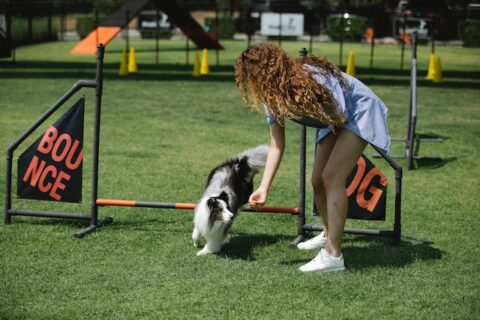

Agility Competitions in Australia
Agility competitions are held throughout Australia, organized by various clubs and organizations. These events range from local meets to national championships.
Participation can be a great way to meet other dog enthusiasts and test your dog’s skills in a competitive setting.
Essential Equipment for Agility
Essential agility equipment includes jumps, tunnels, weave poles, and A-frames. While you can purchase professional-grade equipment, DIY options are available for those just starting.
Ensure the equipment is safe and appropriate for your dog’s size and skill level.
Obedience
Obedience training focuses on teaching dogs to follow commands and behave well in various situations.
Competitions test a dog’s ability to perform tasks like sitting, staying, and retrieving objects under distraction.
What is Obedience Training?
Obedience training involves teaching dogs to respond to specific commands, such as sit, stay, heel, and come.
In competitive obedience, dogs must perform these commands accurately and promptly, even in distracting environments.
Benefits of Obedience Training
Obedience training can lead to better-behaved dogs, making them more pleasant companions at home and in public.
It also strengthens the relationship between the dog and owner by fostering trust and communication.
Levels of Obedience Competitions
Obedience competitions are divided into different levels, from beginner to advanced. Each level increases in difficulty, requiring more precise execution and advanced commands.
Starting at the novice level, teams can work their way up through consistent training and practice.
Training Tips for Obedience
Consistency and positive reinforcement are key to successful obedience training. Use treats, toys, and praise to reward good behaviour.
Keep training sessions short and fun to maintain your dog’s interest and enthusiasm.
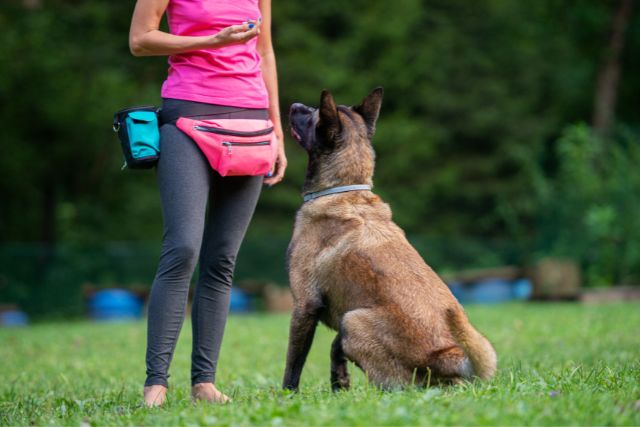

Common Commands Used in Competitions
Common commands in obedience competitions include sit, stay, heel, come, down, and retrieve.
Advanced levels may include more complex tasks, such as directed retrieves and scent discrimination exercises.
Endurance
Endurance trials test the physical stamina of both dogs and their owners. These events typically involve long-distance running or walking, often over challenging terrain.
What is Endurance?
Endurance trials involve dogs and their handlers covering a set distance within a specified time. These trials test the physical fitness, conditioning, and resilience of both participants.
Preparing for Endurance Trials
Preparation for endurance trials should begin months in advance. Gradually increase your dog’s exercise intensity and duration to build stamina.
Regular vet check-ups are essential to ensure your dog is in good health and fit for the challenge.
Health and Safety Considerations
Health and safety are paramount in endurance trials. Dogs should be in peak physical condition, and handlers must be aware of signs of fatigue or distress.
Hydration and nutrition are critical, and breaks should be planned to rest and assess the dog’s well-being.
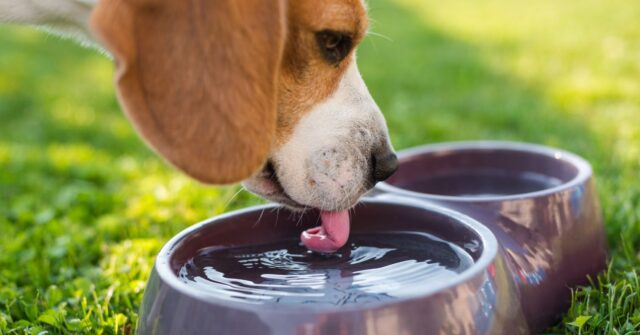

Endurance Events in Australia
Endurance events are held across Australia, typically organized by breed clubs or canine sporting associations.
These events often take place in natural settings, offering scenic routes and challenging terrains.
Flyball
Flyball is a fast-paced relay race between teams of dogs. Each dog must jump hurdles, trigger a box to release a ball and return with the ball to their handler.
What is Flyball?
Flyball involves teams of four dogs racing against each other. Each dog runs a course, jumps over hurdles, triggers a spring-loaded box to release a ball, and then returns with the ball.
The fastest team to complete the course without errors wins.
Rules and Structure of Flyball Competitions
Flyball competitions have specific rules regarding hurdle heights, box mechanisms, and course layout. Teams compete in a head-to-head format, with each dog required to complete their leg of the relay cleanly for the team’s time to count.
Training Your Dog for Flyball
Training for flyball involves teaching dogs to run fast, jump hurdles, and trigger the box accurately. Start with basic obedience and build up to more complex tasks.
Consistent practice and positive reinforcement are crucial for success.
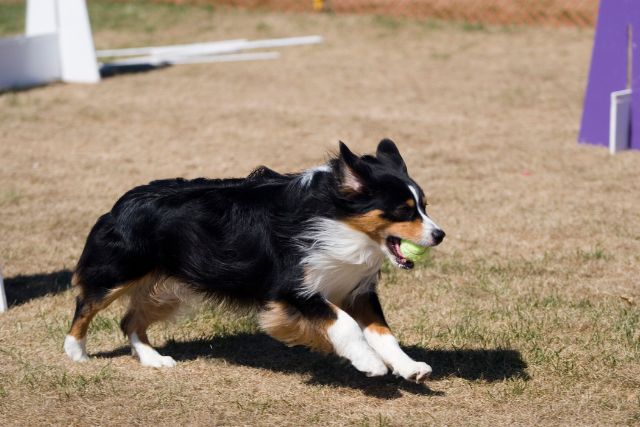

Benefits of Flyball
Flyball provides excellent physical exercise and mental stimulation. It also fosters teamwork and socialization, as dogs and handlers work closely together and interact with other teams.
Flyball Clubs in Australia
Flyball clubs are found throughout Australia, offering training sessions, practice meets, and competitions.
Joining a club can provide valuable support and resources as you and your dog learn the sport.
Herding Trials
Herding trials involve dogs moving livestock, such as sheep or cattle, under the direction of their handlers. These trials test the dog’s natural herding instincts and training.
Understanding Herding Trials
Herding trials simulate real-life scenarios where dogs move and control livestock. Dogs must demonstrate their ability to gather, drive, and pen animals, following their handler’s commands.
Breeds Suited for Herding
Not all breeds are suited for herding. Breeds with a strong herding instinct, such as Border Collies, Australian Shepherds, and Kelpies, excel in these trials.
Their natural abilities and training determine their success in the sport.
Training for Herding Trials
Training for herding trials requires patience and consistency. Start with basic obedience and gradually introduce your dog to livestock.
Work with experienced trainers and join herding clubs to refine your dog’s skills.
Herding Events in Australia
Herding events are held across Australia, often organized by breed clubs and agricultural societies.
These events provide opportunities for dogs to showcase their herding abilities and compete for titles and awards.
Tips for Success in Herding Competitions
Success in herding competitions depends on a strong bond between dog and handler, consistent training, and a deep understanding of livestock behaviour.
Practice regularly and participate in training clinics to improve your skills.
Sledding
Sledding in Australia is a unique adaptation of traditional sled dog sports, tailored to the country’s diverse landscapes and climate.
Unlike the snowy environments typically associated with sledding, Australian sledding often takes place on dirt trails and bushland.
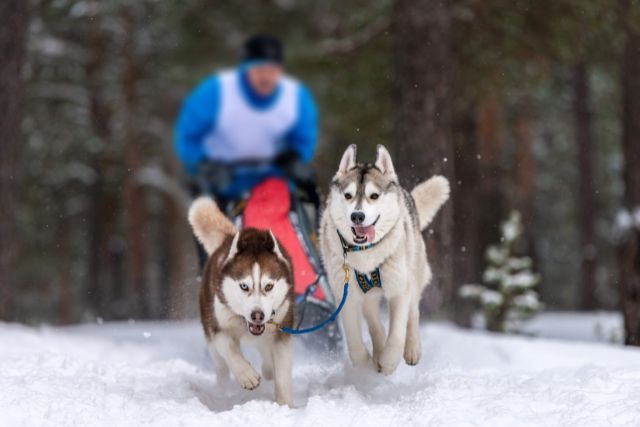

Introduction to Sledding
Sledding involves dogs pulling a sled or wheeled cart, usually over long distances. This sport emphasizes teamwork, endurance, and the strength of the dogs.
In Australia, sledding has evolved to include various forms such as dryland mushing and backpacking.
Types of Sledding Sports
There are several types of sledding sports in Australia, including traditional sled racing, dryland mushing, and weight pulling. Each type offers unique challenges and caters to different breeds and team sizes.
Sledding in Australian Conditions
Australian sledding often occurs in cooler months to prevent overheating. Events typically take place in bushland or forest trails, using wheeled carts or scooters.
This adaptation makes sledding accessible in regions without snow.
Equipment Needed for Sledding
Essential sledding equipment includes a sled or wheeled cart, harnesses, ganglines, and appropriate safety gear. It’s crucial to ensure that all equipment fits well and is in good condition to prevent injuries.
Training Tips for Sledding
Training for sledding should start with building basic obedience and gradually increasing physical conditioning.
Introduce your dog to the harness and pull light weights before moving on to more challenging tasks. Consistent practice and positive reinforcement are key.
Lure Coursing
Lure coursing simulates the hunt, allowing dogs to chase a mechanically operated lure around a predetermined course. It’s a safe and controlled way for dogs to exhibit their natural chasing instincts.
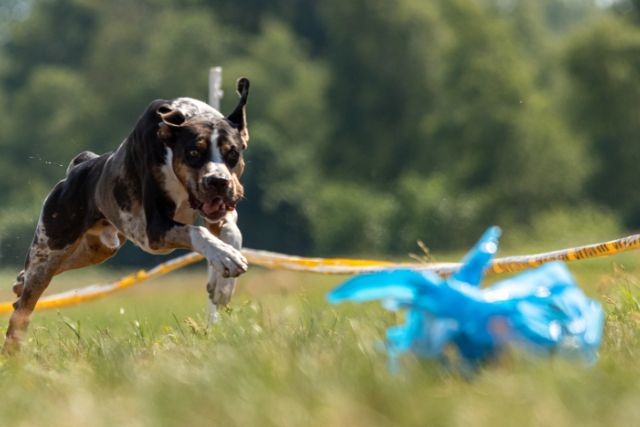

What is Lure Coursing?
Lure coursing involves dogs chasing a lure, usually a plastic bag, that moves unpredictably around a course. This sport primarily targets sighthounds, but many other breeds enjoy and excel at it.
Breeds Suited for Lure Coursing
Sighthounds, such as Greyhounds, Whippets, and Salukis, are particularly well-suited for lure coursing due to their speed and agility.
However, the sport is open to all breeds, with courses adjusted to accommodate different sizes and abilities.
How to Train for Lure Coursing
Training for lure coursing focuses on building speed, agility, and endurance. Start with short chases to build interest and gradually increase the course length.
Use positive reinforcement to encourage your dog and keep sessions fun.
Competitions and Events
Lure coursing competitions are held throughout Australia, with events often organized by breed clubs and sporting associations. These competitions test a dog’s speed, agility, and enthusiasm for the chase.
Benefits of Lure Coursing
Lure coursing provides excellent physical exercise and mental stimulation. It allows dogs to engage in instinctive behaviours in a safe and controlled environment, promoting overall well-being.
Rally Obedience (Rally-O)
Rally obedience, or Rally-O, combines elements of traditional obedience and agility. Dogs and handlers navigate a course with various stations, each requiring specific tasks to be completed.
What is Rally-O?
Rally-O is a fun and engaging sport where dogs perform a series of obedience tasks at designated stations. Unlike traditional obedience, Rally-O emphasizes a more relaxed and interactive atmosphere.
Differences Between Rally-O and Traditional Obedience
Rally-O is more informal and allows for continuous communication between the handler and dog.
The focus is on teamwork and enthusiasm rather than strict precision. Courses are designed to be more dynamic and engaging.
Getting Started with Rally-O
To start with Rally-O, find a local club or trainer who offers classes. Begin with basic obedience skills and gradually introduce your dog to the different stations.
Practice regularly to build confidence and familiarity with the course.
Common Exercises in Rally-O
Rally-O exercises include heeling through cones, performing sit and stay commands, and navigating through various obstacles.
Each station has clear instructions, and the handler can encourage and guide the dog throughout the course.
Benefits of Rally-O
Rally-O enhances the bond between dogs and their owners, providing both physical and mental exercise. It also helps improve a dog’s obedience and responsiveness in a fun and supportive environment.
Tracking and Track and Search
Tracking and track and search are sports that utilize a dog’s natural scenting abilities to follow trails and locate objects or people. These activities are highly rewarding and mentally stimulating for dogs.
Introduction to Tracking
Tracking involves training dogs to follow a scent trail, often to locate a hidden object or person. This sport leverages a dog’s keen sense of smell and innate hunting instincts.


Training for Tracking
Training for tracking starts with short and simple scent trails, gradually increasing complexity as the dog improves.
Use items with strong scents, like clothing, and reward your dog for following the trail accurately.
Track and Search Explained
Track and search is an advanced form of tracking that simulates real-life search and rescue scenarios.
Dogs must navigate through various environments, including urban areas, to find missing persons or items.
Competitions and Events
Tracking and track and search competitions are held across Australia, testing a dog’s ability to follow scent trails and perform search tasks.
These events often involve multiple challenges and varying terrains.
Benefits of Tracking Sports
Tracking sports provides excellent mental stimulation and physical exercise. They also enhance a dog’s problem-solving abilities and can be incredibly rewarding for both the dog and handler.
Common Injuries in Canine Sports
While canine sports are generally safe, injuries can occur. Understanding common injuries and how to prevent them is crucial for keeping your dog healthy and active.
Types of Injuries
Common injuries in canine sports include muscle strains, ligament tears, and joint issues. Dogs can also suffer from cuts, bruises, and paw injuries from rough terrain or obstacles.
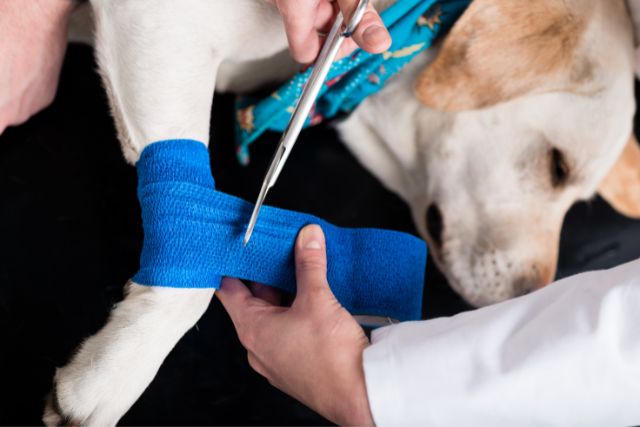

Preventing Injuries
Preventing injuries involves proper conditioning, using appropriate equipment, and ensuring your dog is fit for the activity.
Warm-ups and cool-downs, regular vet check-ups, and maintaining a healthy weight are essential preventative measures.
Treatment and Recovery
If your dog gets injured, immediate rest and veterinary care are crucial. Follow your vet’s advice on treatment and recovery, which may include physical therapy, medication, and a gradual return to activity.
Importance of Proper Conditioning
Proper conditioning is key to preventing injuries. Regular exercise, a balanced diet, and specific training for the sport help build strength and endurance, reducing the risk of injury.
Getting Started with Canine Sports
Starting your journey in canine sports can be exciting and rewarding.
Whether you’re new to dog sports or looking to try something different, there are plenty of resources and communities to help you get started.
Choosing the Right Sport for Your Dog
Consider your dog’s breed, temperament, and physical abilities when choosing a sport. Some dogs excel in high-energy activities like agility or flyball, while others may prefer tracking or obedience.
Finding Local Clubs and Resources
Joining a local club or training group can provide valuable support and resources. These communities offer training classes, practice sessions, and opportunities to participate in competitions.
Training Tips for Beginners
Start with basic obedience and gradually introduce more complex tasks. Keep training sessions short and enjoyable to maintain your dog’s interest.
Use positive reinforcement to encourage good behaviour and progress.


Balancing Fun and Competition
While competition can be exciting, it’s important to keep the experience fun for both you and your dog. Focus on building a strong bond and enjoying the process rather than solely aiming for awards and titles.
Conclusion
Canine sports offer a fantastic way to bond with your dog, keep them fit, and provide mental stimulation.
With so many different activities to choose from, there’s something for every dog and owner to enjoy. Explore these sports and find the perfect fit for you and your furry friend, and enjoy the journey together.






